Introduction
Logs are an important aspect of any production system regardless of the fact that they are not easy to deal with. In modern digital environments, logs are present everywhere. From networking devices, servers, and databases, to operating systems, cloud-based services, and applications, every component produces some form of digital records of events. These records or logs provide an audit trail for Security Information Event Management (SIEM) and help in performance monitoring of servers and applications.
What is Log Management?
Log management is a processes that help IT teams collect and store logs to get visibility into the health of application and infrastructure stack. It involves log collection, aggregation, parsing, storage, analysis, search, archiving, and disposal, with the ultimate goal of using the data for troubleshooting and gaining business insights, while also ensuring the compliance and security of applications and infrastructure.
Log management, therefore, plays a key role in your digital security strategy. Having complete visibility into what events have occurred and are occurring on your network is a must. Log Management allows you to gather the data in one place and look at it as part of a whole instead of separate entities.
Why Is Log Management Important?
By monitoring event logs, you can gain deeper insight into system metrics, localize process bottlenecks, and detect security vulnerabilities. Log management is important for several reasons, but its major benefit is helping tech pros optimize application performance and improve resource allocation.
Benefits include:
- Centralized log data
- Improved system performance
- Time-efficient monitoring
- Automated issue troubleshooting
Log Management Process.
It can be divided into five distinct phases.
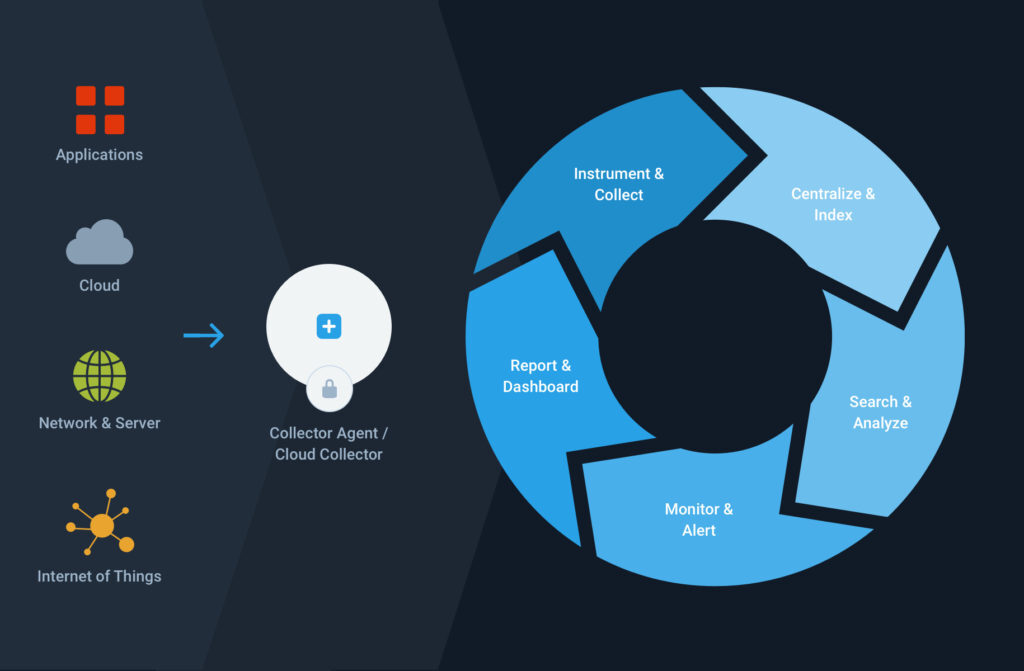
Why do you need log management solutions?
- Log management tool is important to collect data, store it in a proper format for as long as needed, and help analyze issues and errors.
- Log management software helps developers sort real bugs and missing code from common false errors by differentiating flagged issues and serious problems from benign ones.
- Logs are converted into a more coherent and easier to understand format – perfect for status and performance reports submitted to project managers or people who may be less techy.
- Log management apps can be deployed to monitor code in parts of the program that the developer doesn’t always have full access to, but needs to check how they function as well.
Finding the Best Log management tools for your network and infrastructure shouldn’t be a guessing game – We’ve compiled a list of the top 7 Logging tools & software with their features.
1. Graylog

Graylog is a open-source log management platform that supports in-depth log collection and analysis. Used by teams in Network Security, IT Ops and DevOps, you can count on Graylog’s ability to discern any potential risks to security, lets you follow compliance rules, and helps to understand the root cause of any particular error or problem that your apps are experiencing.
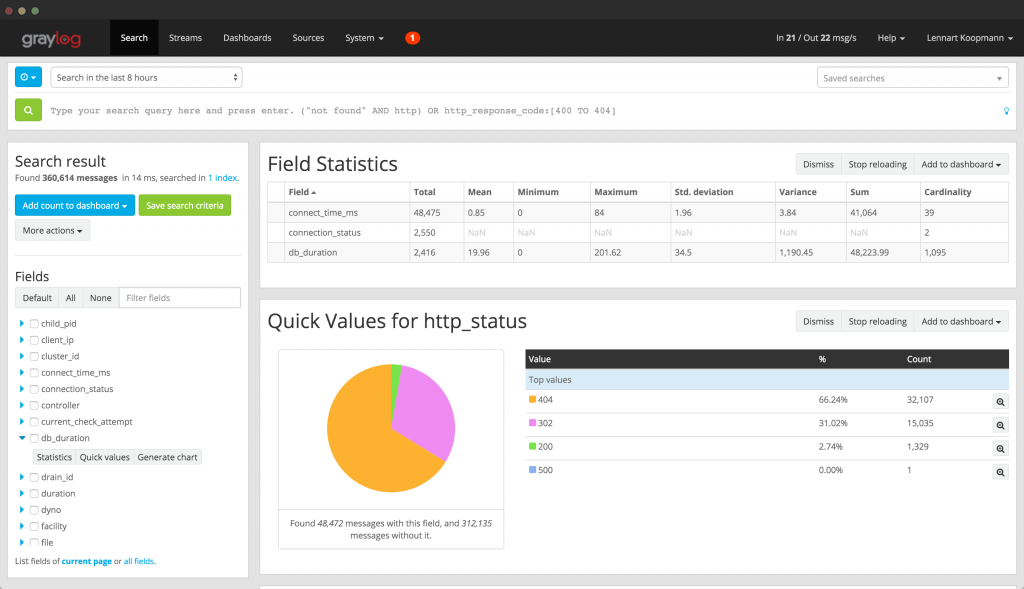
Features
- Enrich and parse logs using a comprehensive processing algorithm.
- Search through unlimited amounts of data to find what you need.
- Custom dashboards for visual output of log data and queries.
- Custom alerts and triggers to monitor any data failures.
- Centralized management system for team members.
- Custom permission management for users and their roles.
Graylog Open Source Log Management Dashboard Configuration
2. Sumo Logic

Originally created to be a SaaS version of Splunk, it has since evolved into an enterprise-class log management tool in its own right. Sumo Logic is a unified logs and metrics platform that helps you analyze the data in real-time using machine-learning, Sumo Logic can quickly depict the root cause of any particular error or event, and it can be setup to be constantly on guard as to what is happening to your apps in real-time. Sumo Logic’s strong point is its ability to work with data at a rapid pace, removing the need for external data analysis and management tools.
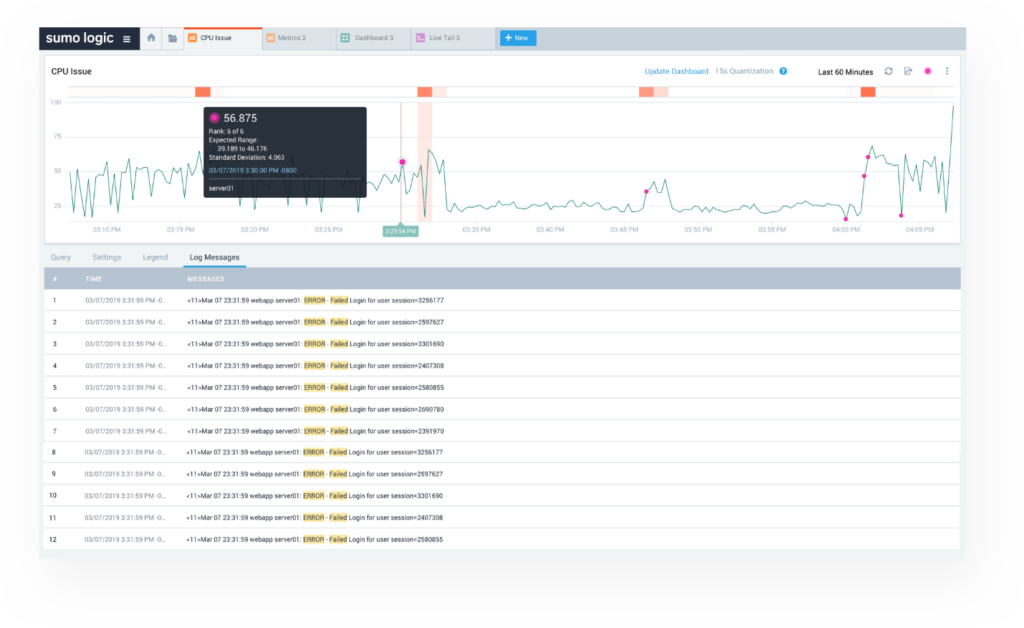
Features
- Unified platform for all log and metrics.
- Advanced analytics using machine learning and predictive algorithms.
- Quick setup.
- Support for high-resolution metrics.
- Multi-tenant: single instance can serve groups of users.
Monitor your Metrics in Real-Time with Sumo Logic Alerts
3. Splunk

Splunk is one of the first commercial log centralizing tools, and the most popular. The typical deployment is on-premises (Splunk Enterprise), though it’s also offered as a service (Splunk Cloud). Splunk’s software is built to support the process of indexing and deciphering logs of any type, whether structured, unstructured, or sophisticated application logs, based on a multi-line approach.
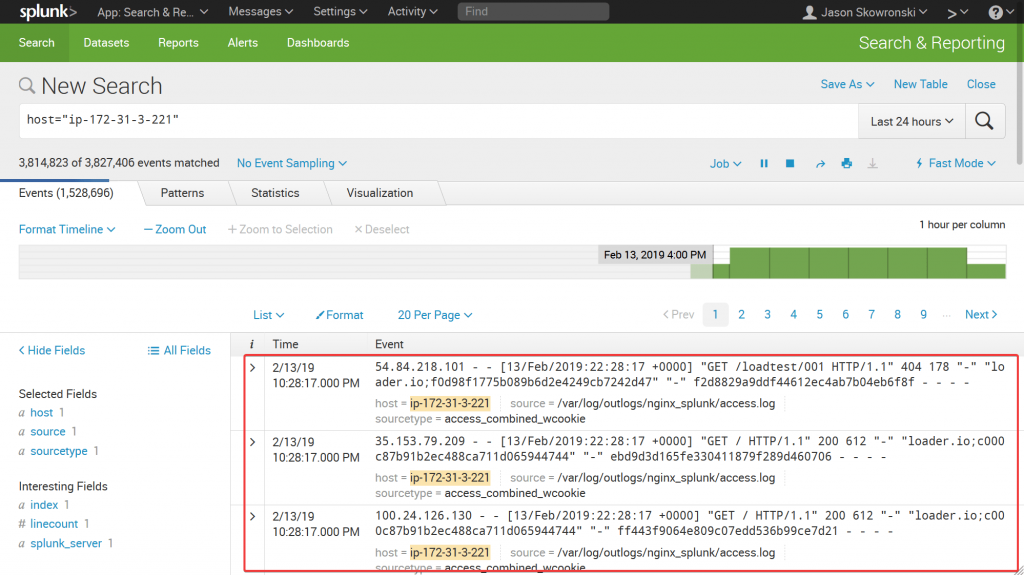
Features
- Splunk understands machine-data of any type; servers, web servers, networks, exchanges, mainframes, security devices, etc.
- Flexible UI for searching and analyzing data in real-time.
- Drilling algorithm for finding anomalies and familiar patterns across log files.
- Monitoring and alert system for keeping an eye on important events and actions.
- Visual reporting using an automated dashboard output.
- Powerful query language for search and analytics.
Splunk Overview
4. SolarWinds Loggly

Loggly is a cloud-based log management tool provided by SolarWinds. It is well known for extensive collections of log data in real-time while giving you the most crucial information, on how to improve your code and deliver a better customer experience. Loggly’s flagship log data collection environment means that you can use traditional standards like HTTP and Syslog, versus having to install complicated log collector software on each server separately.
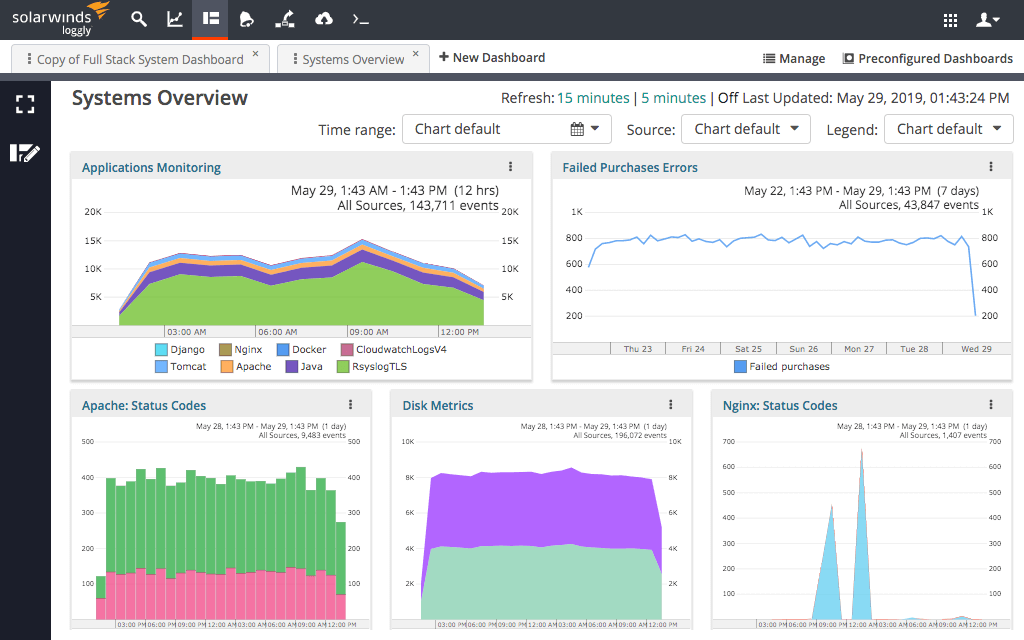
Features
- Collects and understands text logs from any sources, whether server or client side.
- Keeps track of your logs even if you exceed your account limitations. (Pro & Enterprise)
- Automatically parses logs from common web software; Apache, NGINX, JSON, etc.
- Custom tags let you find related errors throughout your log data.
- State of the art search algorithm for doing a global search, or individual based on set values.
- Data analysis dashboard to give you a visual glimpse of your log data.
Loggly a short intro
5. ManageEngine EventLog Analyzer

ManageEngine creates comprehensive IT management software for all of your business needs. Their EventLog Analyzer is an IT compliance and log management software for SIEM that is one of the most cost-effective on the market today. It runs on Windows, but accepts logs from both Windows and UNIX sources along with that it has some SIEM capabilities, especially for Windows.
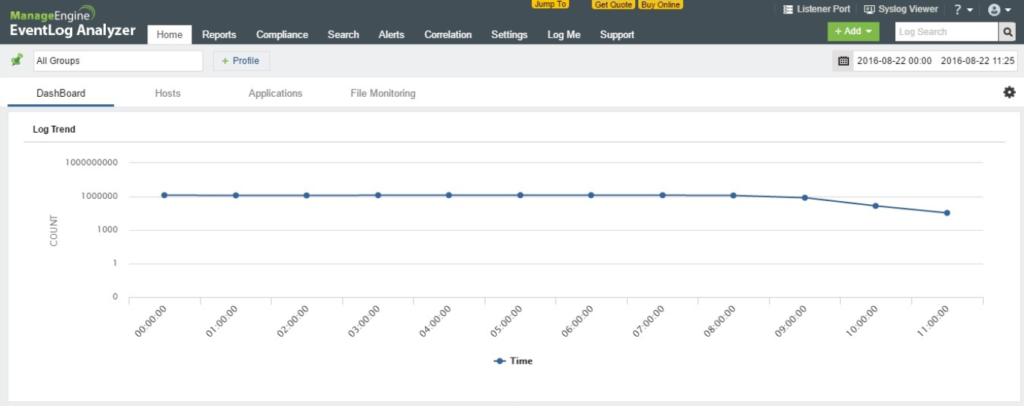
Features:
- Automate the entire process of managing terabytes of machine-generated logs by collecting, analyzing, correlating, searching, reporting, and archiving from one centralized console.
- Monitor file integrity.
- Conduct log forensics analysis.
- Monitor privileged users.
- Comply with various compliance regulatory bodies.
- Analyzes logs to instantly generate a number of reports including user activity reports, historical trend reports, and more.
ManageEngine EventLog Analyzer Product Overview
6. Nagios

Nagios provides a complete log management and monitoring solution which is based on its Nagios Log Server platform. With Nagios, a leading log analysis tool in this market, you can increase the security of all your systems, understand your network infrastructure and its events, and gain access to clear data about your network performance and how it can be stabilized.
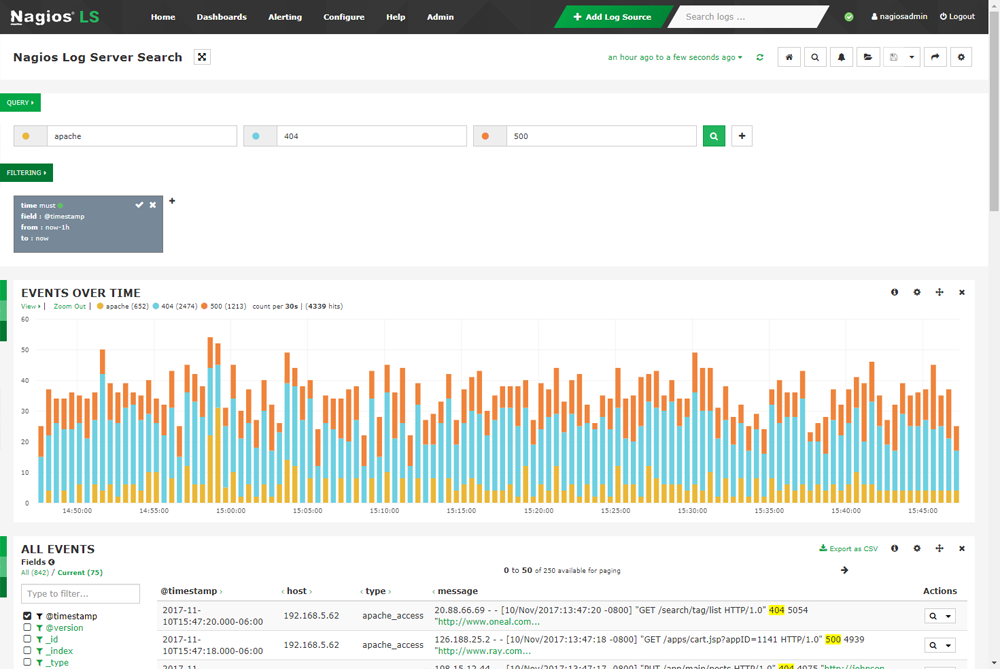
Features
- It gives customers a way to filter, search, and conduct a comprehensive analysis of any incoming log data.
- Extended availability through multiple server clusters so data isn’t lost in case of an outage.
- Custom alert assignments based on queries and IT department in charge.
- Tap into the live-stream of your data as its coming through the pipes.
- Easy management of clusters lets you add more power and performance to your existing log management infrastructure.
Introducing Nagios Log Server
7. Datadog

Datadog is a SaaS that started up as a monitoring (APM) tool and later added log management capabilities as well. You can send logs via HTTP(S) or syslog, either via existing log shippers (rsyslog, syslog-ng, Logstash, etc.) or through Datadog’s own agent. It has excellent log solution that aggregates and can map logs across applications and back to traces. It’s up to date, with libraries and integrations for many tools and languages.
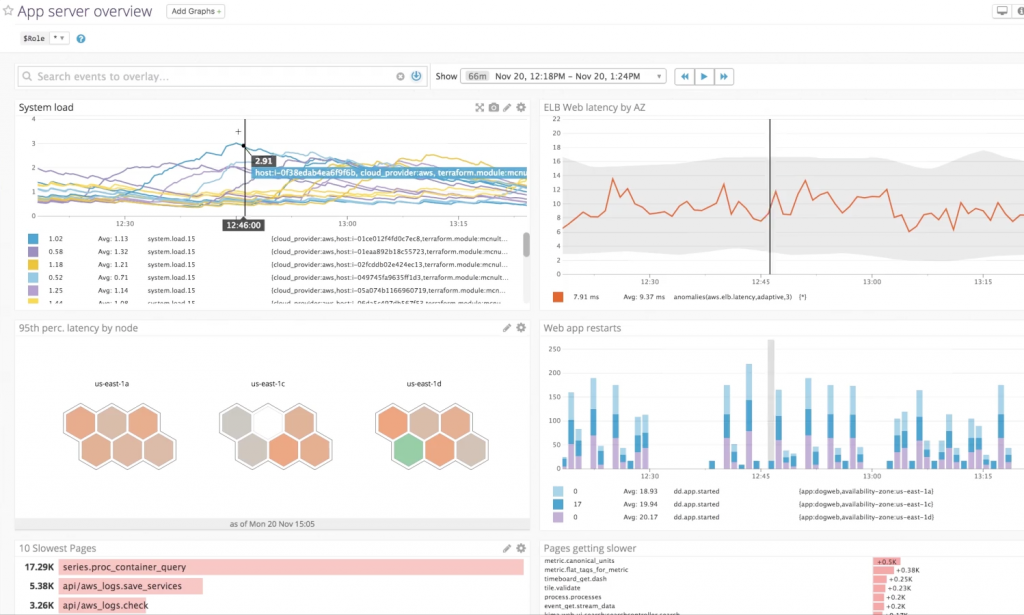
Features
- Server-side processing pipeline for parsing and enriching logs
- Automatically detects common log patterns
- Can archive logs to AWS/Azure/Google Cloud storage and rehydrate them later
Reference
Conclusion
Log monitoring is a vast and varied sub-specialty within the monitoring discipline, and there are solutions out there to fit almost any use case. If you are just beginning your search for the right tool for the job, I hope this has given you a head start.
- How to remove sensitive warning from ms office powerpoint - July 14, 2024
- AIOps and DevOps: A Powerful Duo for Modern IT Operations - July 14, 2024
- Leveraging DevOps and AI Together: Benefits and Synergies - July 14, 2024

